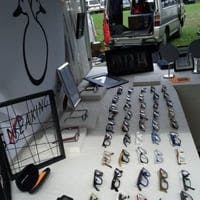Looking for the kind of feedback you get from a customer focus group, but can’t afford the expense of putting one together? Mark Capps, CEO and co-founder of online retailer Sneaking Duck, writes about how four inexpensive weekends at the Bondi Market left his start-up with enough feedback to improve and streamline its offering.
As a retailer, we are obsessed with knowing our customers and potential customers – who are they? What do they and don’t they like? Why do they choose to buy, or not to buy? Being an online retailer means that we need to make an extra effort to collect this feedback as we don’t have a steady supply of customers walking into stores, as a bricks and mortar retailer might. A traditional approach would be to get a customer focus group together – however, as a bootstrapped start-up this wasn’t an option for us.
Therefore, we recently decided to get a stall at the fabulous Bondi Markets. Our aim was to get the chance to talk face-to-face with customers and potential customers, with any sales being an added bonus.
For those of you who haven’t been, Bondi Markets is a Sunday event where a plethora of awesome stalls sell designer clothing, exotic imports, hand made jewellery, arts, crafts, homewares, retro furniture and more. It’s always busy, and attracts a crowd that we felt was well aligned with our target market.
Across the four Sundays we spent there, we spoke to hundreds of people who shared enormous amounts of incredibly interesting and useful feedback. We learned what people thought about our range – what’s good, bad or missing. We gained opinions on pricing, interesting details on how complicated our sales process can seem and hard information on how important health funds are. As a result of this focus group, we changed our online messaging, check-out process and internal prioritisation of projects.
To get these sorts of learnings from a focus group or survey would have taken many hours and potentially cost a lot of money. By going to the markets, we actually made money – we offered a discount for people who purchased on the spot and healthy numbers of people chose to do so.
I’ve put below my key learnings of how to have a successful experience:
- Know the exact details of how stall allocation works – a good position is vital, and the process by which they’re allocated can be mysterious. Arrive early, be persistent and pay attention!
- Be in front of your stall, not hidden behind it – we set ourselves up such that our tables were around the edges, then we as stallholders were in amongst our customers.
- Have an attractive stall, but not too neat and tidy – you need to be appealing, but it seems that nobody likes to mess up a tidy stall. When our frames were all arranged perfectly, nobody wanted to pick them up!
- Enthusiasm is infectious – I couldn’t help but notice that when I was feeling a bit tired and low energy this was reflected back by stall visitors. It’s hard work, but it’s definitely better being high energy.
- Have a good opening line and practice – your first few words will set the scene for your whole interaction, so getting the tone right is essential. We weren’t on a hard sales drive, so generally use a short intro and a question.
- Don’t be afraid to ask people about what they like and don’t like – nearly everyone is incredibly happy to share their thoughts and feel part of something new and exciting.
- Don’t forget to close the sale – people generally need a little push ‘would you like to buy those?’
- …however, if people aren’t going to buy, there’s no point pressuring. Instead, when it was clear a sale wasn’t on the cards we immediately flipped to asking if they’d like to join a mail list or at least take away a card.
Learning about customers is really important. By treating markets as a focus group we were able to get incredibly useful feedback without having to spend money.
What other ways of getting quality customer feedback without spending a fortune have you tried?

